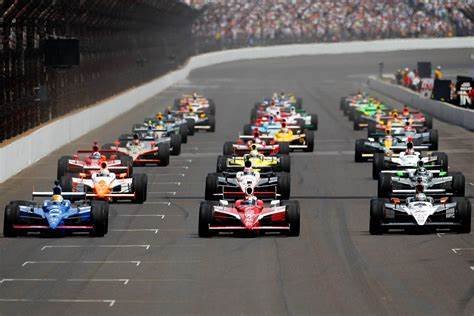The Japanese Grand Prix has long been a staple in the Formula 1 calendar, and its association with the Suzuka International Racing Course has cemented its status as one of the most iconic events in motorsport history. Renowned for its unique figure-eight layout and enthusiastic fanbase, the race has witnessed numerous historic moments and has played a significant role in the development of Formula 1 in Japan. Let’s explore the history of the Japanese Grand Prix at Suzuka.
- Origins of the Japanese Grand Prix
The Japanese Grand Prix was first held in 1963, initially as a non-championship event at the Fuji Speedway. The inaugural race featured a limited field of competitors, but it laid the groundwork for motorsport’s growth in Japan. The event bounced around various circuits over the years, eventually finding its permanent home at Suzuka in the 1980s.
- Suzuka’s Unique Design
Opened in 1962, the Suzuka Circuit was designed by Soichiro Honda and quickly became famous for its challenging layout. The figure-eight configuration is unique among Formula 1 tracks, featuring a mix of high-speed straights and technical corners that test the skills and bravery of drivers. Suzuka’s elevation changes and demanding sections like the “S-Curve” and “130R” make it a favorite among racing enthusiasts and drivers alike.
- The Inaugural Japanese Grand Prix at Suzuka
The first official Japanese Grand Prix at Suzuka took place in 1987. The race drew significant attention as it marked the return of Formula 1 to Japan after a gap in racing at the country’s circuits. Ayrton Senna took the victory, setting the stage for the venue’s association with thrilling races and remarkable moments.
- Historic Battles and Memorable Moments
Throughout its history, the Japanese Grand Prix at Suzuka has hosted some of the most memorable battles in Formula 1. Notable rivalries between drivers, such as Ayrton Senna and Alain Prost in the late 1980s and early 1990s, often played out on this iconic circuit.
Key Highlights:
– 1988 Crash: The infamous collision between Senna and Prost at the 1989 Japanese Grand Prix is one of the most talked-about incidents in F1 history, profoundly impacting both their careers and the championship dynamics that year.
– 1990 and 1991 Seasons: Senna won the Japanese GP at Suzuka in both 1990 and 1991, showcasing his dominance at the track.
– Michael Schumacher’s Success: Schumacher achieved significant milestones at Suzuka, clinching his first world title in 1994 and winning multiple times in the early 2000s, further enhancing the circuit’s legacy.
- Changes and Challenges in the 2000s
The 2000s saw shifts in the F1 calendar and challenges in adapting to evolving safety standards. Suzuka became known for its unpredictable weather, often impacting races significantly. Tyre strategies, pit stops, and driver performances would play a crucial role in determining the outcomes.
Notable Races:
– 2005 Japanese Grand Prix: This race witnessed a dominant performance by Michael Schumacher, where he secured victory despite starting from 14th on the grid.
- The Return of the Japanese Grand Prix
After a hiatus in the early 2010s, the Japanese Grand Prix returned to the calendar with renewed enthusiasm. The resurgence of local manufacturers, like Honda’s partnership with McLaren, added to the excitement surrounding the event. Suzuka continued to host thrilling races that captivated local fans and international audiences.
- The Suzuka Circuit Today
In recent years, Suzuka has maintained its reputation as one of the most cherished circuits in the F1 calendar. Thanks to its unique characteristics, passionate fanbase, and historic races, it remains a favorite among drivers and teams alike.
The circuit has also adapted to modern safety standards while preserving its essence, ensuring that it remains a challenging yet exhilarating venue for both participants and fans.
Conclusion
The history of the Japanese Grand Prix at Suzuka is a captivating story of rivalry, innovation, and passion for motorsport. From its modest beginnings to becoming a key event in the Formula 1 season, Suzuka has showcased some of the most extraordinary moments in racing history. As it continues to evolve, the circuit remains a vital part of Japan’s motorsport legacy, celebrated by fans and drivers around the world. With each passing year, Suzuka reinforces its status as a cornerstone of Formula 1 history, promising exciting races for generations to come.










